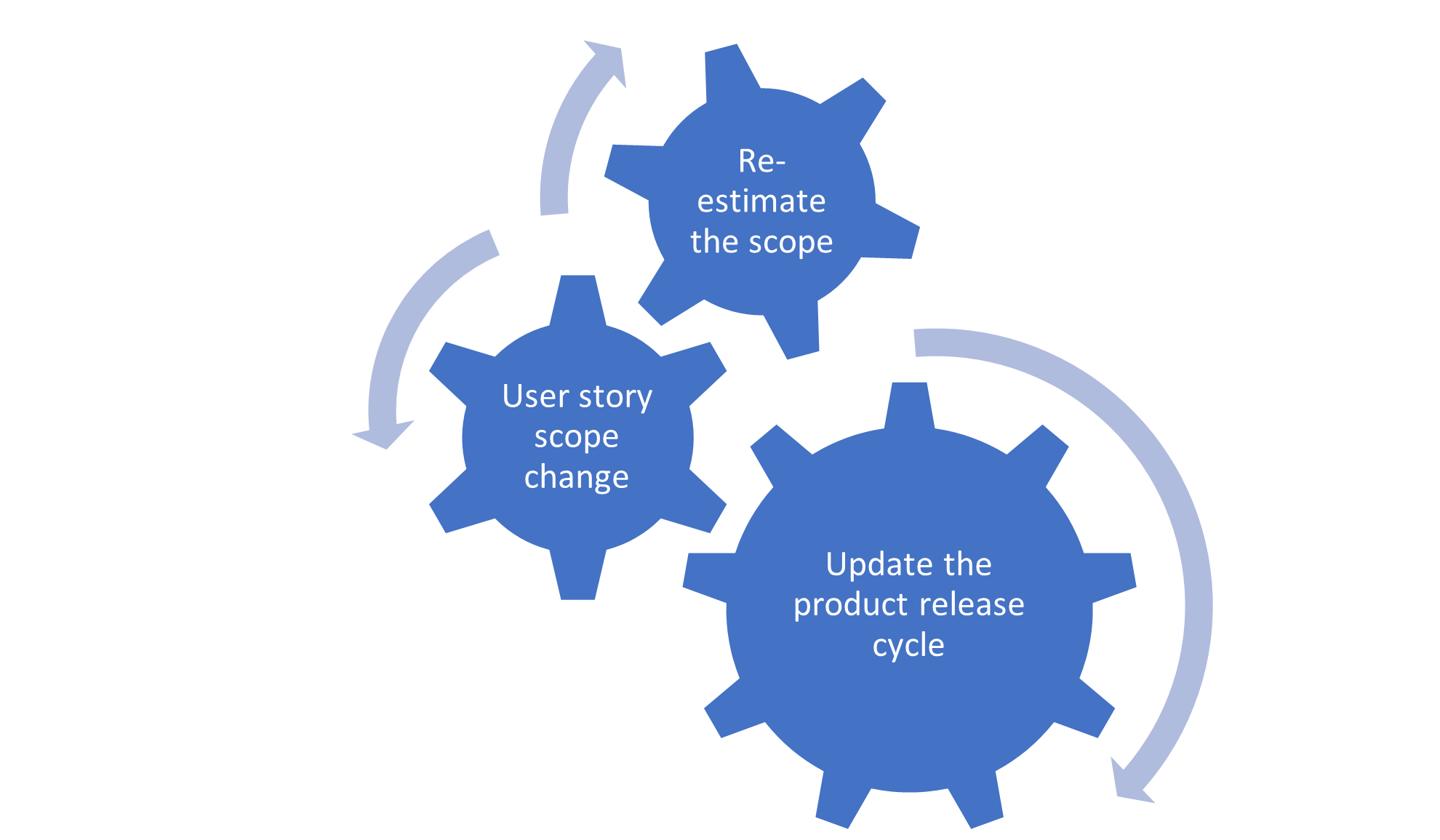What is scope and its management?
Scope defines what a product does and what it does not do. Considering the scope of work, organizations choose other aspects such as requirements, technology for implementation, and support.
In an agile methodology, the scope defines high-level requirements in the form of epics and user stories located in the product backlog. Scope management focuses on maintaining a product backlog, prioritizing user stories, and determining how to deliver them based on team velocity to add value to each released iteration.
Being Agile with Scope Modification
Agile is a value-driven approach to product development. A scope change in agile is any task or feature added to the execution after the team has completed sprint planning.
This can happen anytime in the sprint or cycle time. Let us look at some business scenarios that lead to scope change management.
A scope change can occur due to:
- Ambiguous Scope Definition: The product owner (PO) or business analyst is unable to define the user flow. There are situations where the Definition of Done (DOD) is not refined by the product owner
- Business Requirements Change during Task Execution: The planned feature might not hold better business value, so the product team decided to optimize the requirements and refine the initial agenda
- The Product Owner’s Priorities Change: This is associated with the product vision and roadmap. Agility encourages adaptability, so the product roadmap that was effective a few months ago may yield better results with some priority changes in the product backlog. The scope of milestones gets affected due to changes in product backlog reprioritization
- The Requirement Is No Longer Valid for the Product: The market needs to change with time, and a feature that was impactful when the product backlog was defined may not be valid during the implementation phase
- Lesser Stakeholder Involvement: When the stakeholder(s) are not actively involved with the scrum team, leading to variations in expected outcomes
- Lack of Formal Requirements Management: If requirements are not documented effectively and changes are not tracked using version control, then this will lead to a conflict of ideas and impact the scope
- An Inconsistent Process of Gathering Requirements: Wherever there is an inconsistency, it impacts the scope and produces unexpected outcomes

Occasional Scope Changes in the Project Lifecycle
In this scenario, we’ll look at how a scrum team with a long-term product vision and a product team that is aware of agile project execution handled a scope change.
Considering a Program Increment (PI) planning of 2 months, the scrum team has 3 sprint works planned for execution. The first 2 sprints went well. In the third sprint, the product owner added a user story (an important and high-priority feature) on the fourth day of the sprint. The newly added story is considered a scope change for the scrum team. The scrum team evaluates the impacted areas of the new story and provides estimates. If there are open questions, the scrum team discusses them with the product owner for clarification.
When a user story is deprioritized from sprint, due to a change in feature priority, or it is no longer valid in the product roadmap, the scrum master facilitates a discussion with the product owner and scrum team. Based on the summary, the sprint value is updated by the scrum master or project coordinator. The product owner adds a new story and replaces the existing story in the sprint. The scrum team brainstorms the new story and presents an estimate to the product owner.
If the user story scope is reduced, the scrum team re-evaluates it and discusses the estimates and acceptance criteria with the product owner to confirm execution.
Based on business value addition, the product owner decides whether to deprioritize the existing sprint story over the newly added story to meet the sprint goals or like to address it in the upcoming sprint.
The scrum team adapts to business decisions and works based on input from the product owner.
Continuous Scope Changes in the Project Lifecycle
In this scenario, we’ll look at how product owners and stakeholders express interest in implementing features in the agile scrum workflow but also highlight regular critical features that are released in the mid-sprint.
Release management is continually modified as regular changes in scope are accommodated by the scrum team. To mitigate the issue, the scrum team can work with product owners in the first few sprints by adapting release extensions or user story scope reduction methods. The sprint goal should then be drawn towards a stable sprint delivery. Occasionally, business-critical feature releases can be addressed by building a core team and a vital team to manage product releases.
The core team focuses on continuous product development whereas the vital team focuses on urgent and high-priority feature delivery.
Agile Development with Encora
Encora’s teams of software developers are well-versed in the agile methodology and have used it for years to create high-quality software products. Encora’s software engineers have proprietary agile engineering training and capabilities, which is part of why companies know they can expect excellent results when using an Encora team. Encora teams are high retention, which means companies can both repeat and scale their successful results. Companies interested in accessing top engineering talent skilled in agile methodology can reach out to Encora today to ask questions or get started.
About Encora
Fast-growing tech companies partner with Encora to outsource product development and drive growth. Contact us to learn more about our software engineering capabilities.